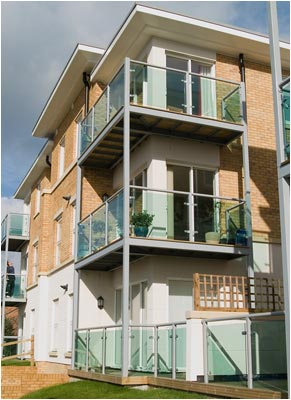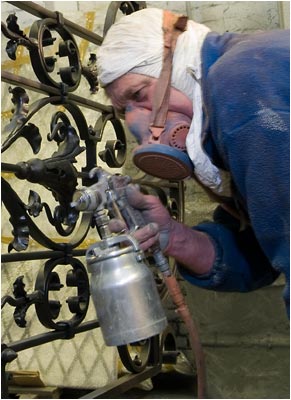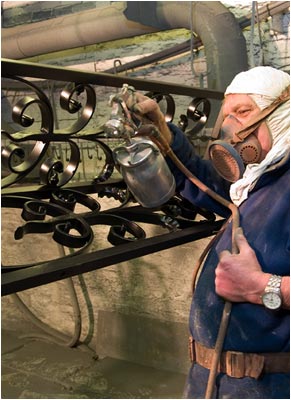Wet sprayed paint
There is a vast array of paint systems available and their application will depend on the use, environment and required life span of the product. The range of possible options expands every year, as new paints are developed.
The three broad types of paint
- Single pack chemically resistant paint
- Two pack chemically resistant paint
- Oil and alkyd-based paint
These may be conventional paints or alternatively high build paints designed to be applied thickly, to achieve protective coatings.

Important issues to consider
Paint compatibility
- The full paint system should be specified in advance of starting the process to avoid selection of chemically incompatible paints which may react together.
Colour and pigmentation
- Certain paints are designed to hold their colour in exterior conditions for decades whilst others may chalk or fade in direct sunlight.
Coating thicknesses
- High build paints can be economically applied in thick coatings. Thicknesses are normally stated as minimum dry film thickness (DFT) per coat, with a minimum overall thickness for the whole system. The coating thickness affects the longevity of the finish.
Application methods
Application may be either by air pressurised spray painting from pots or larger volume airless spraying.
- Air pressurised painting is best suited to decorative finishes where gloss levels and surface texture are important. This method may also be used where items are complex in shape, and a build-up of paint in crevices or recesses is to be avoided.
- Airless sprays are used for less visually critical work where thick coats are applied in relatively few passes.
Corrosion and damage resistance
With ferrous materials zinc primers enhance the resistance to oxidation of the system. In particular hot metal sprayed substrates provide durable and highly resistant undercoats for decorative paint. Different paints provide different levels of resistance to water, chemicals, abrasion, wind and weather.


Preparation
Clean, damp free substrates, with a suitably keyed surface is necessary for a properly adhered finish. For plain mild steel blast cleaning and degreasing should be undertaken within 4-6 hours of application
of the first holding primer.
On galvanised substrates, paint application is preceded by degreasing and tee-washing.
Curing time
Some paints dry hard enough for transport within an hour or two. Others - particularly high build engineering paints - can take 24 hours or more per coat to achieve a hard enough surface for over-coating.
Application conditions
The temperature and humidity of the environment impacts on the finished result. Factory conditions need to be controlled to apply the paint within the manufacturers recommendations. Where required we provide log reports and test samples for each stage of the painting process.
Cost
Paint finishes vary significantly in both per litre cost and in effective per litre coverage.
Standards
BS 5493: 1977 parts 1-3 provide a wealth of information about paint finishes and recommends minimum system thicknesses for particular environments and life spans.
Testing
Blastreat are able to undertake the following tests.
- Film thickness measurements
- Cross hatch adhesion tests
- Scratch resistance tests
- Gloss level tests
